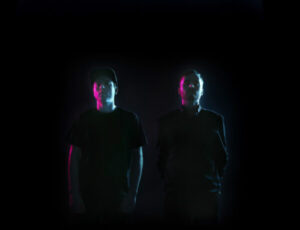Quietly and unexpectedly emerging from a ten-year pseudo-hiatus that had been rife with almost-forgotten rumours of illness, stroke, disability and the ongoing saga of “is he/isn’t he with Mick Jagger?”, David Bowie has released his thirtieth album, The Next Day.
As standard, Bowie uses the current release to play with contemporary musical and technical influences – to the delight of those who relish in his chameleon-esque abilities, and the continued chagrin of those who persist in their desire of a glorified re-release of Space Oddity. Let’s make a deal: spare me the details of how he’s never surpassed “Major Tom”, with the way he really spoke to the groundless plans of a doomed generation, and I’ll leave out any reference to how I spent a good portion of my pre-formative years bouncing on my mini-trampoline to “Modern Love” and ogling his creepy take on fairy-tale leading man in Labyrinth.
That said, The Next Day, does create a certain mood of reminiscence and retro – as is being done by, oh, just about Everyone right now – but few bring the credibility, experience, and straight-up “been there, tried it all” approach as the combination of Bowie and producer Tony Visconti (Space Oddity, among other Bowie; Morrissey, Iggy Pop, Adam Ant, and tons of others). The album has the legitimate play of an artist influenced by, and reacting to, well over 40 years of rock, pop, techno and everything that has come around and in between.
A brief and selective history of the popular music world around Bowie
1947 – David Jones is born – as are Elton John, Brian May and Meatloaf.
1962-65 – During the years of Bowie’s first band, the charts are peppered with the likes of Elvis Presley, The Beach Boys, The Beatles and The Rolling Stones.
1967 – David Bowie, his debut full-length album, is released. The Doors are #6 on Billboard’s top 100 with “Light My Fire”, and The Monkees (with that Other Davy Jones), are #5.
1969 – Space Oddity misses the charts, losing out to the likes of The Temptations, Tom Jones and The Guess Who.
1972 – The launch of Ziggy Stardust. Roberta Flack has the #1 song of the year.
1975 – “Fame” reaches #7 in the US. The Captain & Tennille are at #1 with “Love Will Keep Us Together” (which is, incidentally, my karaoke song of choice).
1976 – With his token self-awareness, Bowie recognizes his majorly coked-out ways are no longer of service to him, and powers into a collaborative relationship with Brian Eno and works with Iggy Pop. Low and Heroes are the fruits of the newly (mostly) sober labours.
1981 – Collaboration with Queen leads to “Under Pressure”.
1982 – An unlikely duet and surprisingly family-friendly theme, Bowie and Bing Crosby reach the Top 5 with their take on “The Little Drummer Boy”.
1983 – Let’s Dance reaches #1 in Canada, the US and UK. The Police and Michael Jackson take numbers 1 and 2 for the year, overall.
1989-1991 –The Tin Machine years. Moving on…
1997 – Trent Reznor brilliantly remixes a rerelease of “I’m Afraid of Americans”, meanwhile the charts are dominated by Jewel, Toni Braxton and the Backstreet Boys.
2002 – Heathen is released and toured. Nickelback has the #1 song of the year. We live in a crazy, crazy world.
2004-2012 – Following his heart attack, performances are few and far between, but Bowie remains effortlessly relevant, decidedly not-randomly showing up with Arcade Fire, Kashmir, Scarlett Johansson and Shrek.
2013 – The Next Day holds onto #1 in the UK for 2 weeks… until being displaced by Justin Timberlake’s latest.
Admittedly, The Next Day brings pointed criticism of the traditional laundry list of pop/rock scapegoats – organized religion, spirituality vs. the cult of celebrity, loss of youth, incidence and levity of mass violence, etc. “Where Are We Now?” stands out as a rare glimpse into truly (apparently) personal experiences of Bowie’s own life, seemingly referencing time and specifics of his season spent in Berlin through quite a beautiful, haunting ballad, while “If You Can See Me” offers Bowie’s take on contemporary synco-pop, infused with a snappy, dissonant melodic line.
Early reviews for The Next Day lament the lack of any true “single”, in the traditional sense – there is no one song of the fourteen (or seventeen, if you’re lucky enough to pick up the limited, extended edition) that defines the album as a whole. Each track brings its own strong and distinct story, with the collection excelling when played straight through as a whole, finally rewarding the listener with “Heat” – a song that may soften the heart of even the most sincere Space Oddity devotees; unfortunately, this demand for the listener’s attention for the span of an entire album doesn’t quite mesh with our Grooveshark/Soundcloud/iTunes/pay-per-track world. The Next Day is a throwback to the times when fans studied liner notes (or heck, even had access to them), kept an album on full-rotation until the full story revealed itself and eagerly discussed meanings, motivation and influences with their fellow aficionados.
With a patience and persistence, this may emerge as one of Bowie’s strongest works. Only time (and our relative and collective attention spans) will tell.










